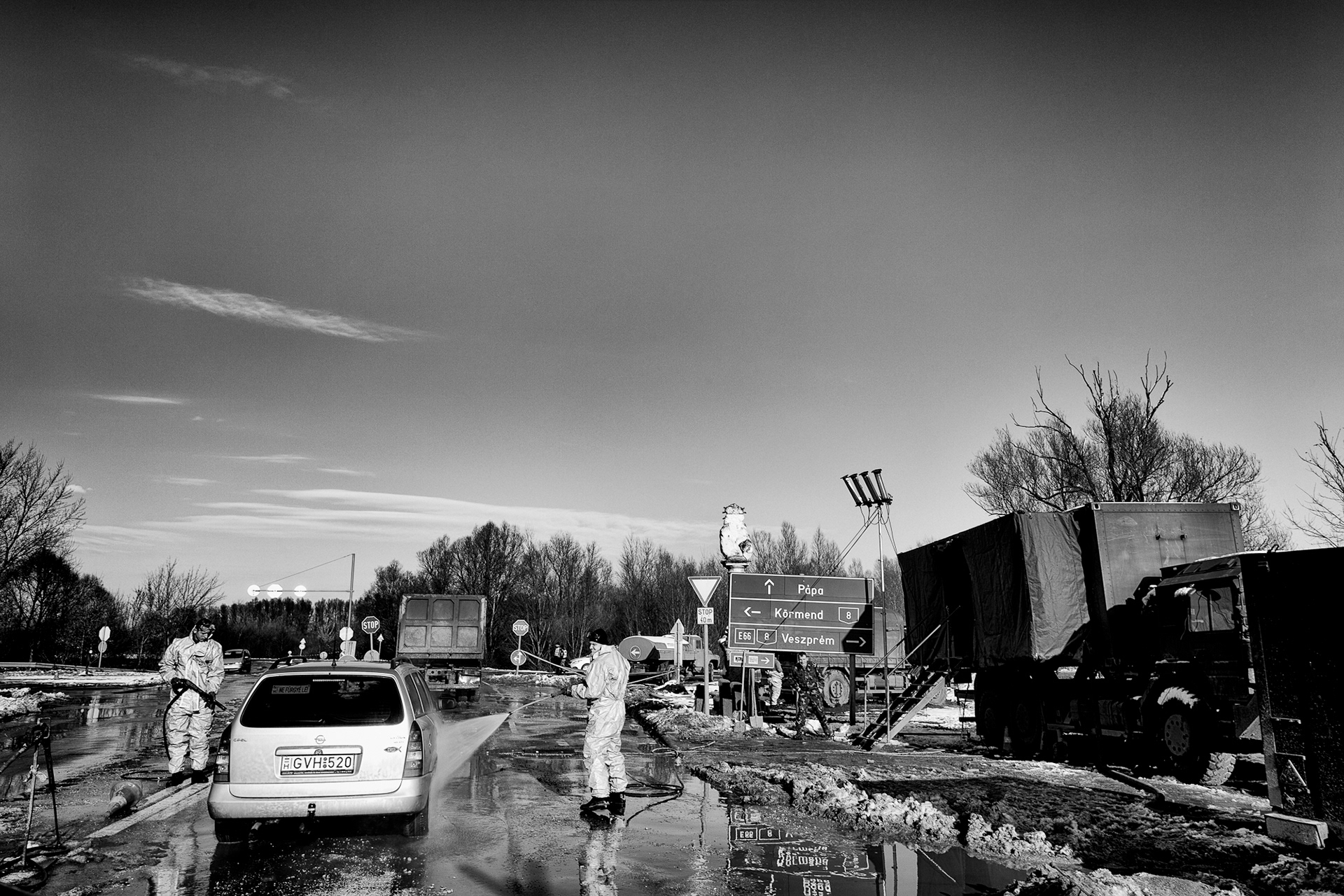Toxic Red Mud Sludge hits Hungary, Kolontar
Toxic Red Mud Sludge hits Hungary, Kolontar: Europe's biggest ecological catastrophe since Chernobyl The Ajka alumina sludge spill was an industrial accident at a caustic waste reservoir chain of the Ajkai Timföldgyár alumina plant in Ajka, Veszprém County, in western Hungary.On 4 October 2010, at 12:25 CEST (10:25 UTC), the northwestern corner of the dam of reservoir no. 10 collapsed, freeing about a million cubic metres (35 million cubic feet) of liquid waste from red mud lakes. The mud was released as a 1-2 m (3-7 ft) wave, flooding several nearby localities, including the village of Kolontár and the town of Devecser. At least nine people died, and 122 people were injured. About 40 square kilometres (15 square miles) of land were initially affected. The spill reached the Danube river on 7 October 2010. The ruptured and weakened wall of the reservoir which released the caustic sludge is in danger of collapsing entirely, which could release an additional 500,000 cubic metres of sludge. The wave of mud flooded streets in Kolontár, where four people were confirmed dead, and Devecser, where the flow was powerful enough to move cars and vans. The cause of death of the Kolontár victims has not been formally confirmed.
The Ajka alumina sludge spill was an industrial accident at a caustic waste reservoir chain of the Ajkai Timföldgyár alumina plant in Ajka, Veszprém County, in western Hungary.On 4 October 2010, at 12:25 CEST (10:25 UTC), the northwestern corner of the dam of reservoir no. 10 collapsed, freeing about a million cubic metres (35 million cubic feet) of liquid waste from red mud lakes. The mud was released as a 1-2 m (3-7 ft) wave, flooding several nearby localities, including the village of Kolontár and the town of Devecser. At least nine people died, and 122 people were injured. About 40 square kilometres (15 square miles) of land were initially affected. The spill reached the Danube river on 7 October 2010. The ruptured and weakened wall of the reservoir which released the caustic sludge is in danger of collapsing entirely, which could release an additional 500,000 cubic metres of sludge. The wave of mud flooded streets in Kolontár, where four people were confirmed dead, and Devecser, where the flow was powerful enough to move cars and vans. The cause of death of the Kolontár victims has not been formally confirmed.

